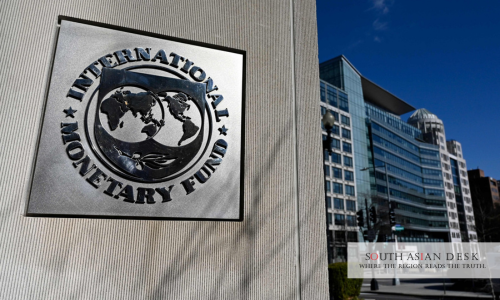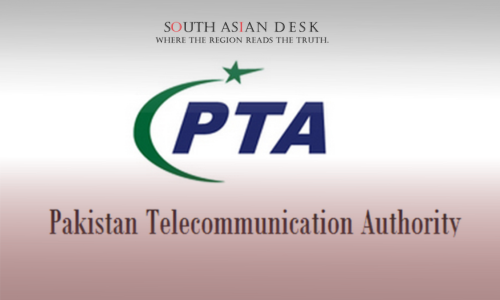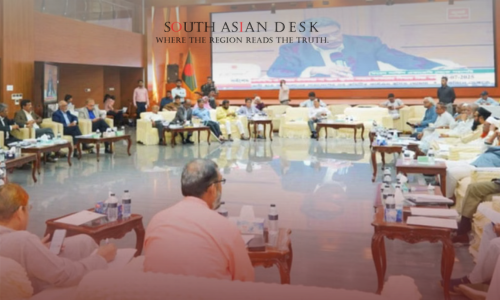ISLAMABAD: Pakistan secures 1bn dollars IMF tranche as the third payout under a $7bn bailout programme, officials confirmed on Monday, despite revenue misses and provincial fiscal lapses that tested reform commitments.
This milestone bolsters reserves in a nation grappling with debt pressures. In South Asia, it signals tentative stability for Pakistan’s economy, a linchpin for regional trade and remittances. Delays could unsettle neighbours reliant on Pakistani exports, while success might inspire similar IMF pacts across the subcontinent.
Pakistan Secures 1bn dollars, Third Tranche Advances Amid Challenges
Staff from the International Monetary Fund wrapped technical talks in Islamabad last week. They assessed progress on the Extended Fund Facility, a 37-month lifeline approved in 2024. The board eyes approval by late October, paving the way for disbursement in early November.
Fiscal slippages marked the review. The Federal Board of Revenue fell short by Rs200 billion in the first quarter of fiscal year 2026. Monthly averages exceeded Rs. 65 billion in misses. Provinces struggled too. Punjab targeted a Rs740 billion cash surplus. Sindh aimed for Rs370 billion. Khyber Pakhtunkhwa sought Rs220 billion. Balochistan planned Rs155 billion. Flood damage complicated these goals.
Yet, the IMF signalled flexibility. Waivers loom for weather-hit areas. Officials highlighted quantitative targets met by the end of June 2025. Power sector recoveries improved. Circular debt eased through fiscal shifts and loans. Gas sector debts rose, however, from liability transfers.
Finance Minister Muhammad Aurangzeb met UAE counterparts on August 29. He outlined taxation reforms and tariff tweaks. Privatisation efforts gained traction. “Pakistan’s way forward lies in investment and export-led growth,” Aurangzeb stated. “Foreign investors play a pivotal role.” He noted financing from the IMF and others hinges on viable projects.
This IMF Pakistan third tranche injects vital liquidity. Reserves stand robust after earlier inflows. Inflation dipped to single digits. The rupee stabilised. Exports rose. Remittances flowed steadily. The Karachi Stock Exchange saw 70,000 new investors.
Pakistan Economic Bailout 2025 Faces Provincial Hurdles
Provinces drew sharp focus during the IMF loan Pakistan slippages discussions. Opposition-led Khyber Pakhtunkhwa boosted spending, irking lenders. Flood relief demands strained budgets across boards. Agricultural income tax laws, passed last year, falter on implementation. Collections slated for September-October now teeter.
State-owned enterprises lagged in governance. Public asset disclosures stalled. The IMF rebuffed tax breaks for refinery upgrades. Such moves clash with the $1.4 billion Resilience and Sustainability Facility for climate resilience. That facility risks derailing $6 billion in investments.
Aurangzeb chaired a meeting with the UK’s Foreign, Commonwealth, and Development Office on August 12. He praised advances on IMF pledges. “Investors seek reduced taxation, lower energy costs, affordable financing, supportive regulations,” he said. UK aid reaffirmed backing for reforms.
On August 27, Aurangzeb conferred with the Asian Development Bank president. They reviewed macroeconomic gains. Inflation plunged sharply. The current account swung to surplus. Sovereign ratings climbed. Borrowing costs fell. ADB pledged policy financing and green bonds.
These steps underpin the Pakistan economic bailout 2025. The programme demands biannual check-ins. Structural benchmarks test resolves. Indicative targets slipped, but core metrics held.
IMF Loan Pakistan Slippages Highlight Reform Gaps
Revenue shortfalls topped concerns in the IMF loan Pakistan slippages tally. The FBR’s quarterly gap hit Rs200 billion. Provinces missed surplus marks amid monsoon chaos. Floods submerged crops and homes, diverting funds.
Global winds favoured Pakistan. Major IMF voters backed the push. Policy talks resume October 9-10. Additional fixes aim to plug holes by October 8. Court recoveries or November measures might bridge gaps.
The power sector shone. Recoveries rose. Circular debt shrank via targeted aid. Gas woes persisted, though. Benchmarking efforts continue.
Aurangzeb’s UAE briefing stressed export focus. Panda bonds and Eurodollar issuances loom to pad reserves. A current account surplus topped $1 billion in March 2025. Foreign direct investment jumped 44 per cent.
ADB talks underscored women’s inclusion and disaster tagging in budgets. Trade liberalisation advanced. Industrial policies sharpened.
UK collaboration honed GST harmonisation. Compliance risks eased. Taxpayer interfaces improved.
These threads weave into the IMF Pakistan third tranche narrative. Slippages persist, but momentum builds.
Background: Roots of the $7bn Lifeline
Pakistan inked the $7bn EFF in 2024 after balance-of-payments woes. Earlier tranches totalled over $2 billion. The first review, cleared in May 2025, unlocked $1 billion. A Resilience Facility added climate buffers.
Monsoon floods in 2025 amplified strains. Rivers swelled. Villages flooded. Relief costs soared. The programme tests fiscal discipline amid climate shocks.
Reforms span taxation, energy pricing, and enterprise oversight. Provinces harmonise levies. Federal-provincial pacts curb deficits.
The IMF Pakistan third tranche caps a pivotal review. It rewards partial wins while flagging lapses.
What’s Next: Board Nod and Beyond
Board approval awaits in weeks. Disbursement follows swiftly. Provinces must recalibrate surpluses. Tax collections resume post-floods.
Aurangzeb eyes deeper ties with multilaterals. ADB green swaps and UK technical aid flow. UAE investments target growth sectors.
Pakistan secures $1bn IMF tranche as a bridge to self-reliance. Yet, sustained reforms decide long-term fate.
Published in SouthAsianDesk, October 4th, 2025
Follow SouthAsianDesk on X, Instagram, and Facebook for insights on business and current affairs from across South Asia.






